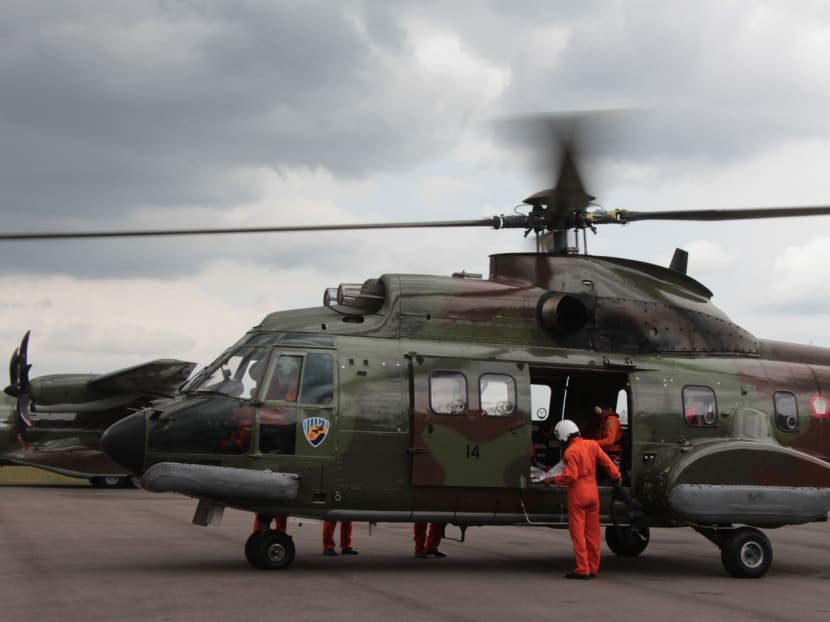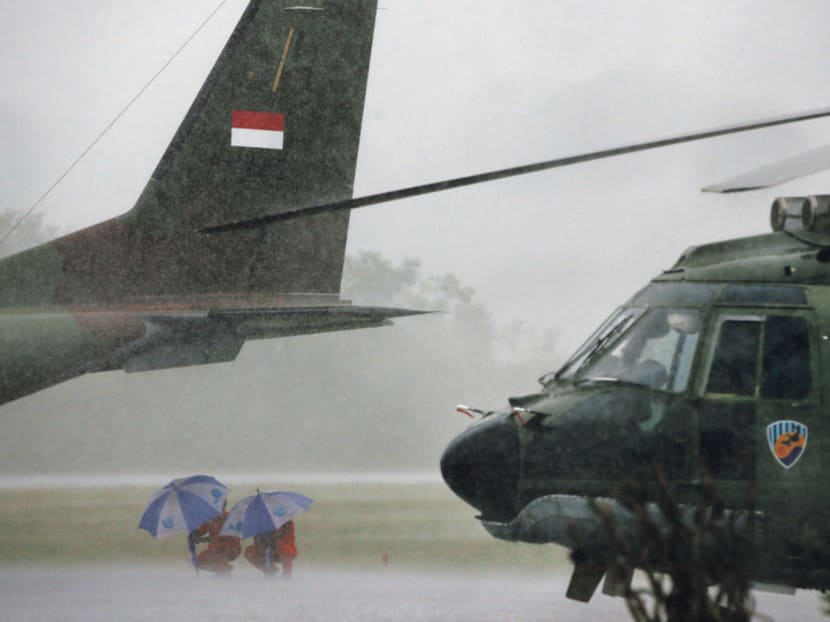Bad weather continues to hamper search efforts
PANGKALAN BUN (INDONESIA) — Major Suryo’s Super Puma helicopter was only 10 minutes away from what is believed to be a body of an AirAsia crash victim off the south Kalimantan coast yesterday when dark clouds appeared on the horizon — the first major storm in the area after two days of good weather.


PANGKALAN BUN (INDONESIA) — Major Suryo’s Super Puma helicopter was only 10 minutes away from what is believed to be a body of an AirAsia crash victim off the south Kalimantan coast yesterday when dark clouds appeared on the horizon — the first major storm in the area after two days of good weather.
The pilot steered his chopper in an attempt to circumvent the looming black clouds but had to turn back to Pangkalan Bun eventually for safety reasons. Barely 10 minutes after he landed, the city was drenched by its heaviest rain in three days.
“The weather is full of rain and very dark. I cannot see anything,” Major Suryo told TODAY while under shelter at Iskandar Airport in Pangkalan Bun yesterday.
The storm ended two days of calm weather at the Central Kalimantan town and the surrounding seas, where an intense international search effort is under way for bodies and debris from AirAsia flight QZ8501, which crashed eight days ago into the Java Sea en route to Singapore from Surabaya.
The unpredictable storms — lasting for 30 minutes, then subsiding, before resuming — have frustrated helicopter pilots, such as Major Suryo, at the frontline of search efforts, which are growing more urgent as bodies typically sink after six to seven days at sea.
The helicopter’s flight engineer, Mr Joko Subroto, said the ice crystals and lightning in the storm clouds could cause the pilot to lose control of the helicopter. Poor visibility under heavy rain would make the search fruitless as well, said Mr Joko, who has spent 25 years as a flight engineer.
With the difficult search now into its ninth day, Major Suryo, who as pilot has the final say on what and when to retrieve from the sea, will be forced to make difficult choices.
On standby to take to the skies again today, he hopes for good weather as flying through heavy rain and winds burns up more fuel, shortening the helicopters’ range.
“When I spot a body, I will only go down and recover it if there is at least 10 to 15 minutes of fuel left,” said the 36-year-old, who has been an air force pilot since 2003. “I cannot take the risk. If I fly for too long ... I cannot come back.”
Drifting bodies also pose problems for helicopters, which take about one hour to reach search areas designated by passing planes. By the time helicopters reach the site, the body could have been tossed as far as 500m away by strong waves.
Despite the difficulties, Major Suryo remains determined to recover more bodies in the days ahead. “The wind is moving from east to west, approaching the coast,” he said hopefully, adding that this could result in bodies being washed up on Kalimantan’s shores.






